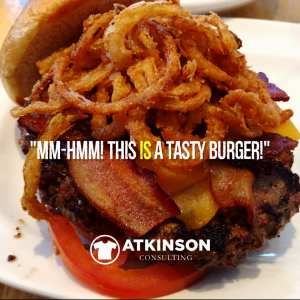Here’s a mindset that I would like you to strongly consider, “Better Before Cheaper”.
You may have heard similar phrases like this before.
“Buy nice or buy twice.”
“You get what you pay for.”
You get the drill. But how does this apply to your shop? Believe it or not, this mantra can be applied in all sorts of areas. Let’s take a look.
Better Before Cheaper: People
First, let’s consider the people you bring on board to work for you. Sure you can go out and get someone at minimum wage. That’s entirely possible, and some shops are constantly looking out for the cheapest employees they can find.
But, are they the most productive?
Currently, it is an extremely tight labor market.
I know many shops that are searching for all sorts of employee talent right now and are having trouble finding ones that will even consider the job.
In your shop the one thing that matters most is the people doing the work.
Nothing gets accomplished without them.
Whether your shop has one employee or one hundred, who you let in the door to work for you make a tremendous difference. In fact, I’ll bet a considerable amount of your headaches stem from some sort of a company personnel issue.
Familiar Migraines?
- Absenteeism – some employees are continually missing work or are late.
- Apathy – maybe they just don’t care. Let’s call this the “Warm Body Syndrome”.
- Skillset – do they have the background they need to elevate your shop’s performance?
- Hustle – does it look like your crew is swimming in molasses every day?
- Performance – do you get the results that you need on a consistent basis?
The Law of Thirds
One thing I’ve learned over the years is that in any given group or organization you can rate the people into three different category types.
Top Third
The top third of the people are your rockstars. They do all the work, and in fact, are the ones that you lean on when the going gets tough.
These people never miss work, and will happily do whatever it takes to make magic happen. They constantly think about how to improve things and often drive innovation and improvements. They are not necessarily your team leaders or managers either.
Hopefully, you are constantly rewarding these folks, both with tangible things like money, bonuses, or small appreciation gifts. Keeping them happy should be in the forefront of your mind.
Frequent intangible gestures like a simple “Thank You”, a pat on the back, or acknowledgment in front of the team, goes a long way too.
Middle Third
The middle third of your crew make up the chunk of people that do the work, but sometimes have issues.
Your HR and management team should constantly be working with this group to get them to become your top third.
Whatever their issues are, you can resolve them by either with positive reinforcement when something goes right…or negative reinforcement when challenges swing the other way.
This requires action on your part though, and plenty of shops look a blind eye when resolving these challenges and “just let things happen”.
Want more rockstars? Direct some effort into that with your middle third staff and nurture that result.
Bottom Third
Of course, this brings us to the bottom third. When you hire anyone that can fog a mirror, this is what you get. Remember, “warm bodies”.
These are the people in your group that always have problems. You spend a lot of time discussing them. They are the ones with the attendance issues, quality issues, or attitude issues.
My advice?
Spend a little effort in documenting the problems to cover your butt, and push these employees to move up to the middle third or terminate them from your company permanently.
A good chunk of the time, your effort to improve these people won’t matter.
Better to let another company discover the “joy” of working with them.
Better Before Cheaper?
So, what’s this have to do with Better Before Cheaper you may ask?
It’s simple. Better employees are going to cost more money.
A better salesperson will close more deals for you and bring in more orders, than someone with half of their skill and drive. But, that veteran salesperson will need a better compensation package than someone with middle-third or bottom-third skills.
What is the result you want here? To save money on payroll or double your sales goals for the quarter?
The same goes for an artist, screen-printing or embroidery machine operator or customer service rep.
Top-third type staff members will out-perform other types day in and day out. Often, working circles around everyone else and making them look silly.
If you want results-oriented people working for you, keep this in mind. Especially if you have been beating your head against a wall with staffing challenges.
One more thing.
If someone can go work at a McDonald’s and make more money than the starting position on your production staff, is it any wonder you can’t find better employees?
Nothing against McDonald’s, but working in a shop is hot, stressful, and takes considerable physical effort every day. Look at how you are positioning your job openings against other businesses in your area.
Answer this question: “Why would anyone want to work for you?”
Better Before Cheaper: Customers
I’m sure I’m going to get a lot of flack for this, but I’ll just go ahead and say it.
Some of your customers are a waste of your time.
It’s ok to say no. In fact, recommend these loser jobs to your competition down the street and let them clog up their schedule for zero profit instead.
That eight-piece, two location, ten screen order that is due in two days that the customer haggled you on the price for twenty minutes? It’s a loser from start.
Don’t believe me?
Grab a sheet of paper and track the time that every person in your shop is taking working on that job. You know what these people make an hour.
Do the math.
At the end of all of that work, were you as profitable as you need to be to reach your sales goals for the quarter?
Why waste your time with cheap, low-ball customers?
The Hamburger Story

As an example, I want you to stop for a minute and consider the lowly hamburger.
It’s a staple in the restaurant industry. And, based on my waistline, my diet as well.
There are restaurants, such as the previously mentioned McDonald’s that sell it at the lowest price possible. You can get a hamburger there, or any other fast food franchise for about $1.
Now, let’s consider other restaurants you might visit.
If I can get a hamburger for $1, why would I spend more money anywhere else? Isn’t price the only factor here?
Let me tell you, I buy hamburgers all the time in restaurants and routinely spend $12-$15 for one. The concept is the same. Ground beef patty. Onions, lettuce, tomatoes, cheese, and other ingredients.
So what’s the difference?
You Know The Answer
The difference is in the experience. It’s in the quality of the meal. Maybe even the presentation, after all, we eat with our eyes first. C’mon, onion strings, and bacon? Perfection!
I will happily pay TWELVE to FIFTEEN times more for one because I know that I can get a better product and get a better experience somewhere else.
Now, change what I wrote above and switch the word “hamburger” for “t-shirt” or “embroidered polo”.
You don’t have to be the McDonald’s for apparel decoration. There are customers out there that will happily pay you much more for your work.
If I want a burger, I’m not going to McDonald’s. In fact, I can’t even remember the last time I had one.
Guess what? There are customers for our industry that don’t want the equivalent of the McDonald’s experience either.
For customers, write your business plan so you are targeting Better Before Cheaper.
Better Before Cheaper: Supplies
How do you consider what to use in your shop for the work you do?
Where does price fit into that consideration?
Some shops dive headfirst into the shallow end of the pool and only use supplies that are super cheap.
- The masking tape that constantly rips into tiny pieces, or the ink that is so thin you have to double stroke it to get a decent print.
- That emulsion that is constantly breaking down.
- Embroidery thread that is prone to breaking in the middle of a run.
- Shrink-wrap that requires you to mummify the skid to secure the load.
- Reclaim chemicals or press wash that require more effort to clean or do the job.
- The list goes on and on.
So when you tried to save a buck or two on this stuff what is the final outcome?
More downtime not producing work. Slower run speeds. Shoddy results. Frustrated staff. Even upset clients.
A big fat, “Ut oh” usually.
Make sure your bookkeeper or accounting team isn’t the one driving these purchases.
They usually don’t understand the processes of what makes your shop tick.
Instead, Think This Way
Take a step back and really consider what you are after when making these purchasing decisions.
If you spend a little more, will you get a superior end result? Will the item add more quality to the process?
That extra labor you have to put into using a cheaper alternative product completely eliminates the pennies you might be saving by taking the cheaper route.
This can be easily tested.
Try a cheaper product and use it for an extended period of time, like a week or month. Keep notes and list the challenges your crew faces. Then, try a few alternatives that might be more expensive, but better quality.
Compare the results.
Take pictures and document the different scenarios. Run some time studies on how long something takes.
Take all of that data, and what you will find is that usually, the better product is going to cost more. That item will also save you time, and give you a better result to boot. In fact, that better performing something might actually be cheaper if you consider other factors than what you paid for it.
There is more to “cost” than the price you pay.
That worker that has to use the product and it takes twice as long? What are you paying for the hour to do something over because the first one didn’t work?
Not convinced?
Why do chefs constantly source the best produce and meats they can find, often going back to the farms the products originated from? Because they know that when the quality of their ingredients is increased, the end result is a taste explosion.
Be the chef in your own kitchen.
That shows up to your customer when they can’t believe your results compared to that “other shop”.
Better Before Cheaper: Equipment
If you spend any time on any online forum you are bound to come across posts about some cheap equipment that someone is looking into for their shop.
There usually is a photograph and some sketchy details. The price is considerably less for this equipment than any of the more established brands. Included in the post, is twenty or thirty comments.
“Oh, what a deal!”
At least that is what you think until you look a little closer.
Where’s that coming from again? What’s the warranty? How solid is the structure of the equipment? Will it be easy to maintain? What’s the parts situation if something breaks? Consider the electronics…state of the art or fire hazard?
Remember, you are about to use this thing in your process to turn jobs and make money.
When things get crazy busy, what happens if this machine goes down? Can you afford that for a few days while you try to find the parts to fix it or a replacement unit?
What happens to all of those orders that have to ship?
Will you still pay your crew to stand around, or do they get sent home and ultimately make less on their paycheck this week? What do you think they will say about getting this cheapo equipment when the rent is due and they didn’t get enough hours?
The Better Before Cheaper Difference
Now, think about why that other machine might cost a little more.
For starters, it was engineered better. Which costs more to build.
They used better parts. Those cost more too.
The company also has a better warranty, which means they stand behind their work. Just like you do.
For support, they have trained technicians that can help you diagnose and solve whatever problem you are having. They have parts too. In a lot of areas, they even have staff that can come out to make repairs to the machine in your shop.
Again, getting that set up costs a little more. But the benefit is reliability.
Your equipment is the number one tool you use to produce orders in your shop. Are you sure you want to go with the unreliable, untested version?
For a final example here I want you to think about a master carpenter. Picture that guy in your mind.
What tools is he using to build with every day?
Certainly not the cheap stuff.
Measure twice, cut once.
“Postive anything is better than a negative nothing.” – Elbert Hubbard
“You have to be able to accept failure to get better.” – LeBron James
“Excellence is the gradual result of always striving to do better.” – Pat Riley
Something Better: Shirt Lab Columbus

If your shop needs help with sales and marketing, then I would like you to please check out the new initiative that I’m partnering with Tom Rauen on, called Shirt Lab. This is a one-day sales and marketing learning event that will be held in different cities, one per business quarter.
Our first event will be in Columbus, Ohio on Saturday, October 27, 2018. Q1 2019 will have the event in Atlanta, Georgia. Q2 2019 will have the event in Portland, Oregon.
The Columbus event will be packed full of interactive learning, fun, networking, and new ideas that will make your sales and marketing program much stronger. We’re bringing in the top minds in the business to teach you the best industry practices for sales and marketing. You won’t find this information anywhere else in one session. Accelerate your shop’s growth by doing things differently.
Please click this link to check out our webpage to learn more about the event. You can save $200 by registering by August 31, 2018.
Accompanying our event will be a new podcast, the Shirt Lab Answer Series. We want you to send us your biggest sales and marketing challenge for the show. We’ll have our industry guests answer them on this new weekly podcast. To submit your question, click this link.
Finally, we would love for you to join our mailing list to learn more about Shirt Lab events in your area, our podcast, and other information from the Shirt Lab Ecosphere. Simply click this link to get started.
Follow us:





1 comment
ambersolorzano
I really appreciate your “Law of Thirds” insight on employees. It’s a great way to look at them to make decisions of fire or coach. I invest far to much time on the bottom thirds hoping they will improve when I know deep down many of them are who they are and are not a fit for our shop.
In terms of clients, we are at that point in our growth where we have to make some hard decisions on a few clients who are no longer a fit for our capacity. I started job costing last year to determine the bare minimum an invoice must be to even cover the costs of processing, before it even hits production. The true cost of time with some of these smaller clients is mind boggling.
Thanks for another great article!
Amber